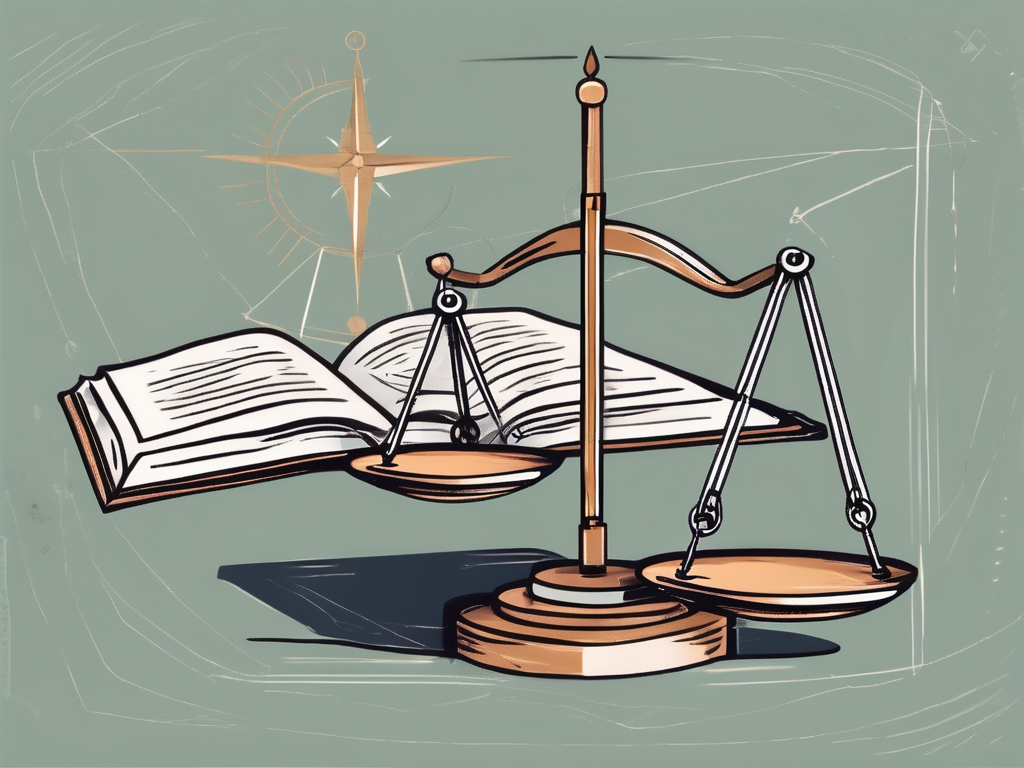Restoration is a concept that holds great significance in Christian belief and is rooted in the teachings of the Bible. Understanding what the Bible says about restoration can provide guidance and hope in times of trouble and uncertainty. In this article, we will explore the biblical definitions of restoration, its importance in Christian belief, and its relevance in both the Old and New Testaments. We will also discuss theological interpretations of restoration and how it can be applied in modern life.
Understanding the Concept of Restoration in the Bible
Before delving into the specifics, it is essential to grasp the foundation of the concept of restoration in the Bible. Restoration, in biblical terms, refers to the act of bringing something back to its original state or condition. This could include the restoration of relationships, God’s people, and one’s spiritual life. The Bible offers numerous examples of restoration, providing a roadmap for understanding its importance and application in our lives.
Restoration is a theme that runs throughout the Bible, from the Old Testament to the New Testament. It is a concept deeply rooted in God’s character and His desire to bring about wholeness and redemption. Understanding the significance of restoration can help us navigate the challenges and trials of life, knowing that there is always hope for renewal and transformation.
Biblical Definitions of Restoration
The word “restoration” is mentioned in various contexts throughout the Bible, each shedding light on its meaning. In many instances, restoration is associated with the idea of renewing and rebuilding. It signifies the process of returning something to its former glory or function. For example, in the book of Nehemiah, we see the restoration of the walls of Jerusalem after they had been destroyed. This physical restoration symbolized the rebuilding of the city and the restoration of its people.
Additionally, restoration is linked to reconciliation and forgiveness, emphasizing the healing and rebuilding of broken relationships. In the story of the prodigal son, we witness the restoration of the father and son’s relationship after the son had squandered his inheritance. The father’s forgiveness and embrace of his son exemplify the transformative power of restoration.
The Importance of Restoration in Christian Belief
Restoration plays a pivotal role in the Christian faith, as it reflects God’s unending love, grace, and willingness to redeem His people. It is a powerful reminder that no matter how far we may have strayed, God is always ready to restore us to wholeness and bring us back into a close relationship with Him. This aspect of restoration underscores the transformative nature of God’s love and highlights His commitment to healing and renewal.
Furthermore, restoration is not limited to individual lives but extends to the broader scope of creation. The Bible speaks of a future restoration where all things will be made new. This includes the restoration of the earth, the elimination of suffering and pain, and the establishment of God’s kingdom in its fullness. The hope of this ultimate restoration gives believers the assurance that their present struggles and hardships are not in vain.
In conclusion, the concept of restoration in the Bible is multifaceted and encompasses various aspects of life, including relationships, spiritual well-being, and the future hope of a renewed creation. It is a testament to God’s faithfulness and His desire to bring about healing and wholeness in our lives. As we seek to understand and apply the principles of restoration, may we find comfort in knowing that God is always at work, bringing beauty out of brokenness and restoring what was lost.
Old Testament References to Restoration
In the Old Testament, we find numerous references to restoration, illustrating God’s desire to restore His people and bless them abundantly. These references not only provide us with a glimpse of God’s character but also serve as a source of hope and encouragement for us today.
One notable example of restoration can be seen in the Book of Job. The story of Job is a tale of immense suffering and loss. Job, a righteous man, faced unimaginable hardships, losing his wealth, his health, and even his family. Despite enduring such tremendous pain, Job’s faith remained unshaken. He refused to curse God or turn away from Him.
Throughout the book, we witness Job’s struggle to understand why he was suffering. He questioned God, seeking answers and longing for restoration. Job’s friends, in their misguided attempts to provide comfort, accused him of wrongdoing and urged him to repent. But Job, in his unwavering faith, clung to the hope of restoration.
And in the end, God restored Job’s fortunes and doubled his blessings. The restoration Job experienced was not only physical but also spiritual. Through his suffering, Job gained a deeper understanding of God’s sovereignty and wisdom. He learned to trust God’s plans, even when they seemed incomprehensible.
Another example of restoration can be found in the Psalms. The Psalms are a collection of poetic expressions of longing for restoration and the hope of God’s intervention. The psalmists cried out to God in times of distress, seeking His restoration and deliverance.
These heartfelt prayers and expressions of longing remind us that restoration begins with a humble heart that acknowledges our need for God’s healing touch. The psalmists understood that true restoration comes from God alone, and they poured out their hearts before Him, seeking His mercy and grace.
Through their honest prayers and expressions, the psalmists teach us the importance of turning to God in times of trouble. They remind us that restoration is not just about the external circumstances but also about the inner transformation that takes place when we surrender ourselves to God’s will.
As we reflect on these Old Testament references to restoration, we are reminded of God’s faithfulness and restorative power. We are encouraged to trust in His plans, even when we face trials and hardships. And we are reminded that true restoration comes from a deep and intimate relationship with God, where we surrender ourselves completely to His loving care.
New Testament Perspectives on Restoration
The concept of restoration is further illuminated in the New Testament, particularly through the teachings of Jesus and the letters of Paul. These texts provide valuable insights into the significance and application of restoration in the Christian faith.
Restoration in the Teachings of Jesus
Jesus, as the embodiment of God’s love and forgiveness, emphasized the importance of restoration in His teachings. He spoke of the transformative power of repentance and reconciliation, urging His followers to seek restoration with God and with one another. Through His interactions with individuals, Jesus exemplified restoration by extending grace and healing to those who believed in Him.
For instance, the story of the prodigal son illustrates Jesus’ teachings on restoration. In this parable, a wayward son squanders his inheritance but is welcomed back by his loving father with open arms. This narrative highlights the unconditional love and forgiveness that God offers to those who repent and seek restoration.
Moreover, Jesus’ ministry was characterized by acts of restoration. He healed the sick, gave sight to the blind, and even raised the dead, demonstrating His power to restore physical and spiritual wholeness. These miracles serve as tangible manifestations of God’s desire to restore His creation to its intended state of perfection.
Restoration in the Letters of Paul
Paul, in his letters to various early Christian communities, expounded on the transformative power of the Gospel and its ability to restore believers to a right relationship with God. He emphasized the reconciling work of Christ, who through His death and resurrection, made restoration possible for all who put their faith in Him.
In his letter to the Corinthians, Paul addressed the issue of division within the church. He urged the believers to seek restoration and unity, reminding them that they were all part of the body of Christ. Paul emphasized that restoration should not only be sought individually but also extended to one another, fostering love and harmony within the Christian community.
Furthermore, Paul’s own life serves as a powerful example of restoration. As a former persecutor of Christians, he experienced a radical transformation upon encountering Christ. This encounter led to his conversion and subsequent ministry as an apostle. Paul’s life story demonstrates the redemptive power of God and the possibility of restoration for even the most broken and lost individuals.
In conclusion, the New Testament provides a rich tapestry of teachings and examples that highlight the significance of restoration in the Christian faith. Jesus’ teachings and actions, as well as Paul’s letters, emphasize the transformative power of repentance, reconciliation, and the Gospel in restoring individuals to a right relationship with God and fostering unity within the body of Christ.
Theological Interpretations of Restoration
Within theological discussions, restoration is often linked to salvation and forgiveness.
Restoration is a concept that holds deep significance in theological conversations. It encompasses the idea of being brought back to a state of wholeness and completeness, both in our relationship with God and in our interactions with others. The theological interpretations of restoration shed light on its connection to salvation and forgiveness, revealing the transformative power it holds.
Restoration and Salvation
Salvation, a central theme in Christianity, is deeply intertwined with restoration. Through the redemptive work of Jesus, we are not only saved from the consequences of our sins but also restored to a right relationship with God. This restoration is a testament to God’s immense love and grace, as it offers us the opportunity to experience eternal life in His presence.
Furthermore, restoration goes beyond the promise of future salvation. It invites us to live in the fullness of God’s love and purpose in the present. This means that as believers, we are called to actively participate in the restoration process, allowing God to transform our hearts and minds, and aligning our lives with His divine plan.
Restoration and Forgiveness
Forgiveness lies at the core of restoration. Just as God forgives us for our transgressions, we are called to extend forgiveness to others. This act of forgiveness is not merely a formality but a profound expression of love and compassion.
Restoration necessitates humility, vulnerability, and a willingness to let go of past hurts. It requires us to release the burdens of resentment and anger, allowing God’s healing touch to mend the brokenness within our souls. In forgiving others, we create space for true healing and restoration to take place, both in our own lives and in our relationships with others.
When we choose to forgive, we emulate the character of God, who is the ultimate source of restoration. It is through forgiveness that we open ourselves up to the transformative power of God’s love, allowing Him to work in our lives and relationships, bringing about reconciliation and healing.
In conclusion, restoration holds profound theological significance. It is intricately connected to salvation, offering us the opportunity to be reconciled with God and experience His love and purpose. Moreover, restoration is intimately tied to forgiveness, as it requires us to extend grace to others and participate in the transformative work of God. As we embrace the concept of restoration, may we continually seek to live in the fullness of God’s love and extend forgiveness to those around us, creating a world marked by healing, reconciliation, and restoration.
Applying Biblical Restoration in Modern Life
The principles of restoration outlined in the Bible hold timeless relevance, offering guidance for navigating modern challenges.
Restoration in Personal Relationships
Personal relationships can often suffer strain and brokenness. However, the Bible teaches us to pursue restoration in our relationships, striving to forgive, reconcile, and rebuild trust. By following the example of Jesus and embracing humility and grace, we can work towards restoring and nurturing healthy connections with others.
Restoration in Spiritual Life
Our spiritual lives can also experience seasons of dryness or brokenness. Yet, by turning to God and seeking His restoration, we can experience a renewed sense of purpose, joy, and intimacy with Him. Restoration in our spiritual lives involves surrendering our plans to God and allowing Him to work in us, transforming us from the inside out.
What Does the Bible Say About Restoration? In exploring the concept of restoration, we have witnessed its significance throughout the Bible. From the Old Testament to the New Testament, restoration emerges as a central theme, shining light on God’s unwavering love, faithfulness, and restorative power. By embracing the biblical principles of restoration and applying them in our lives, we can experience the transformative healing and renewal that comes from drawing near to God. May we continually seek restoration, knowing that God’s love is always ready to rebuild, redeem, and restore.












